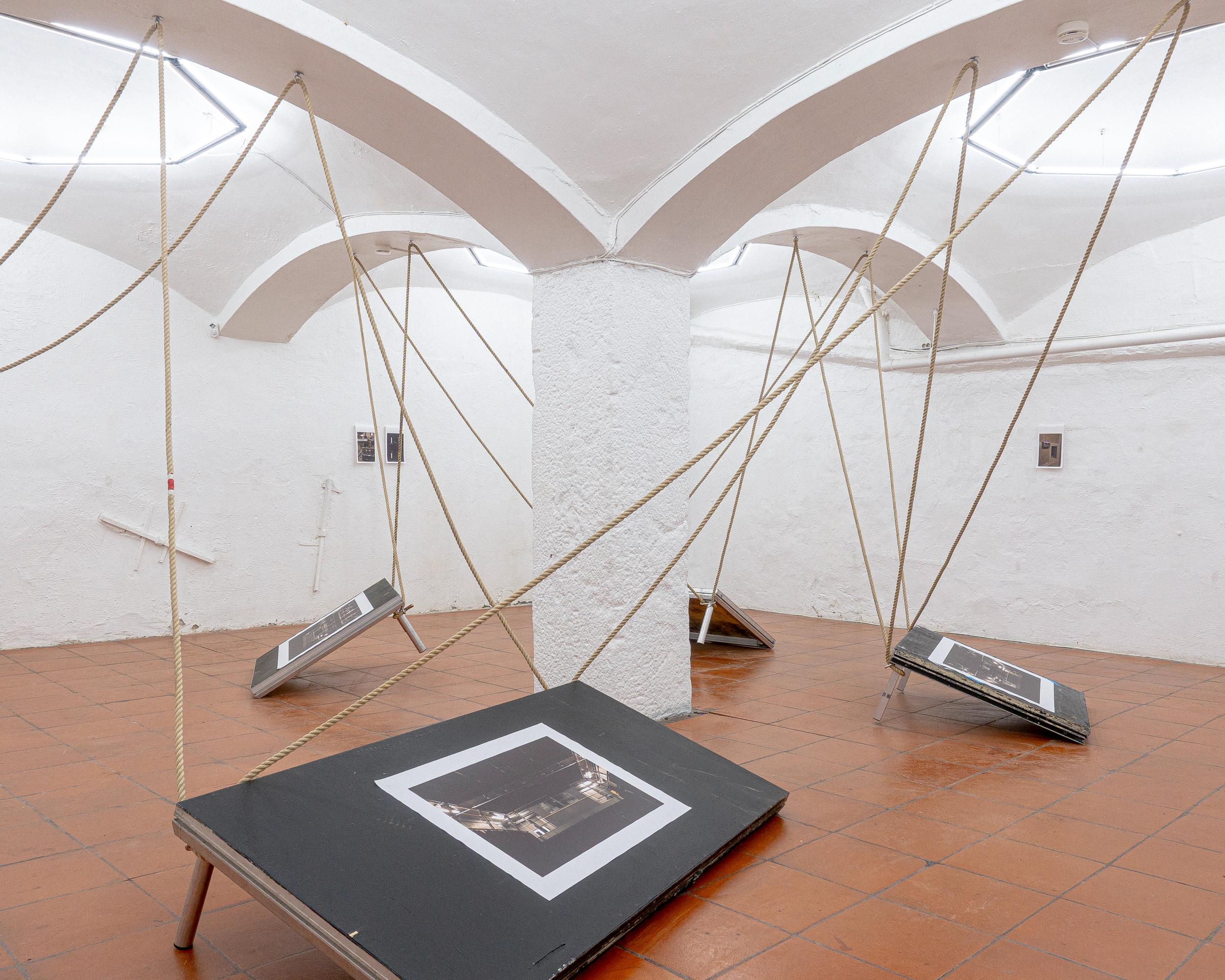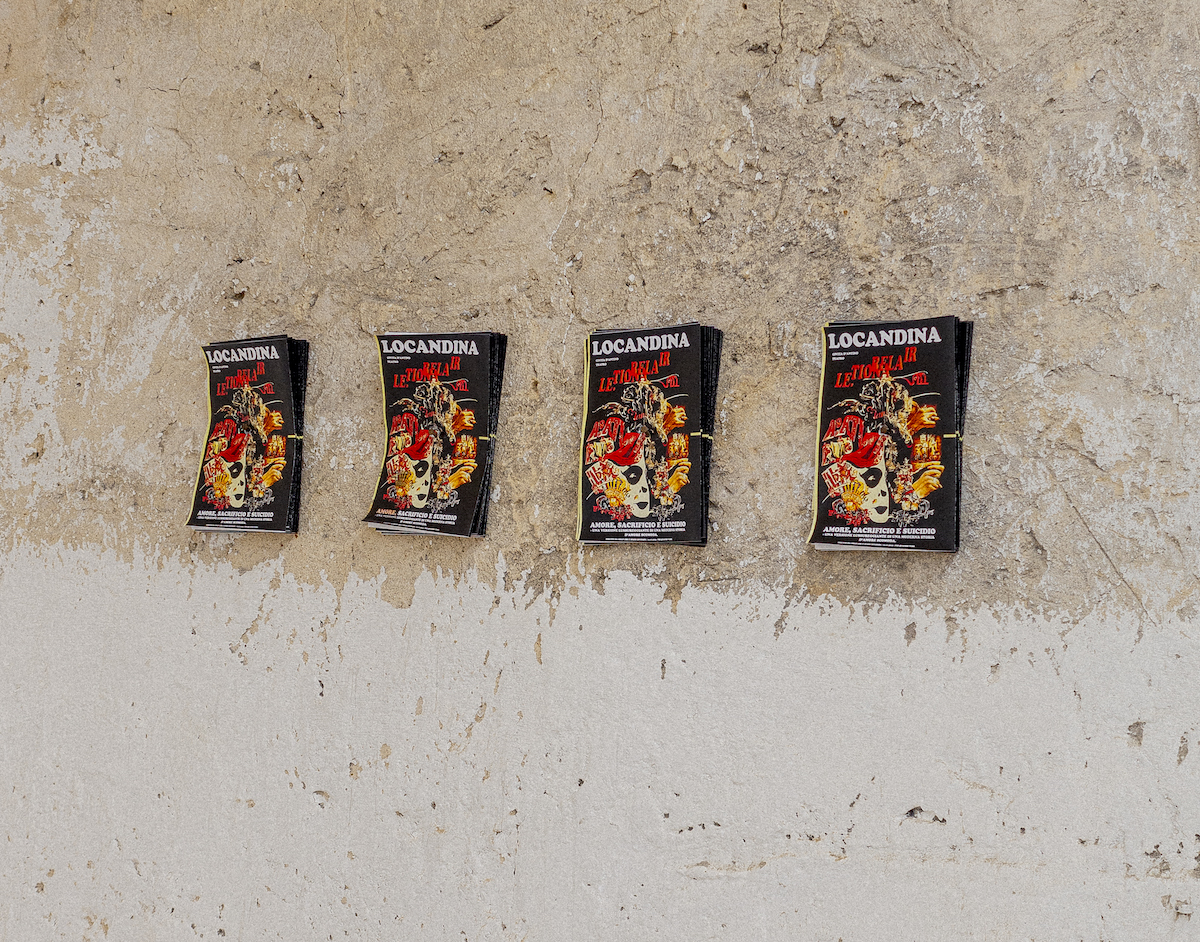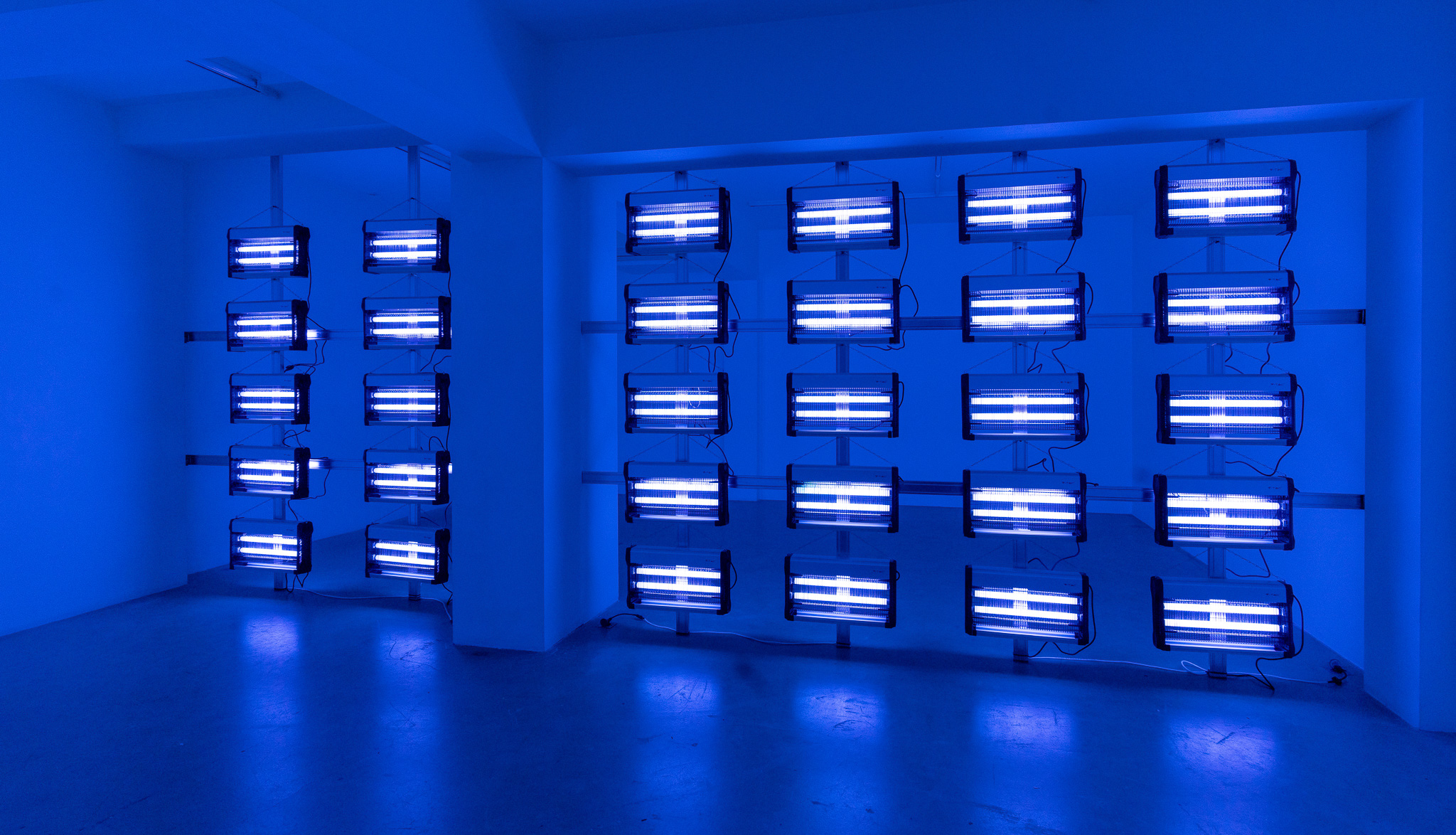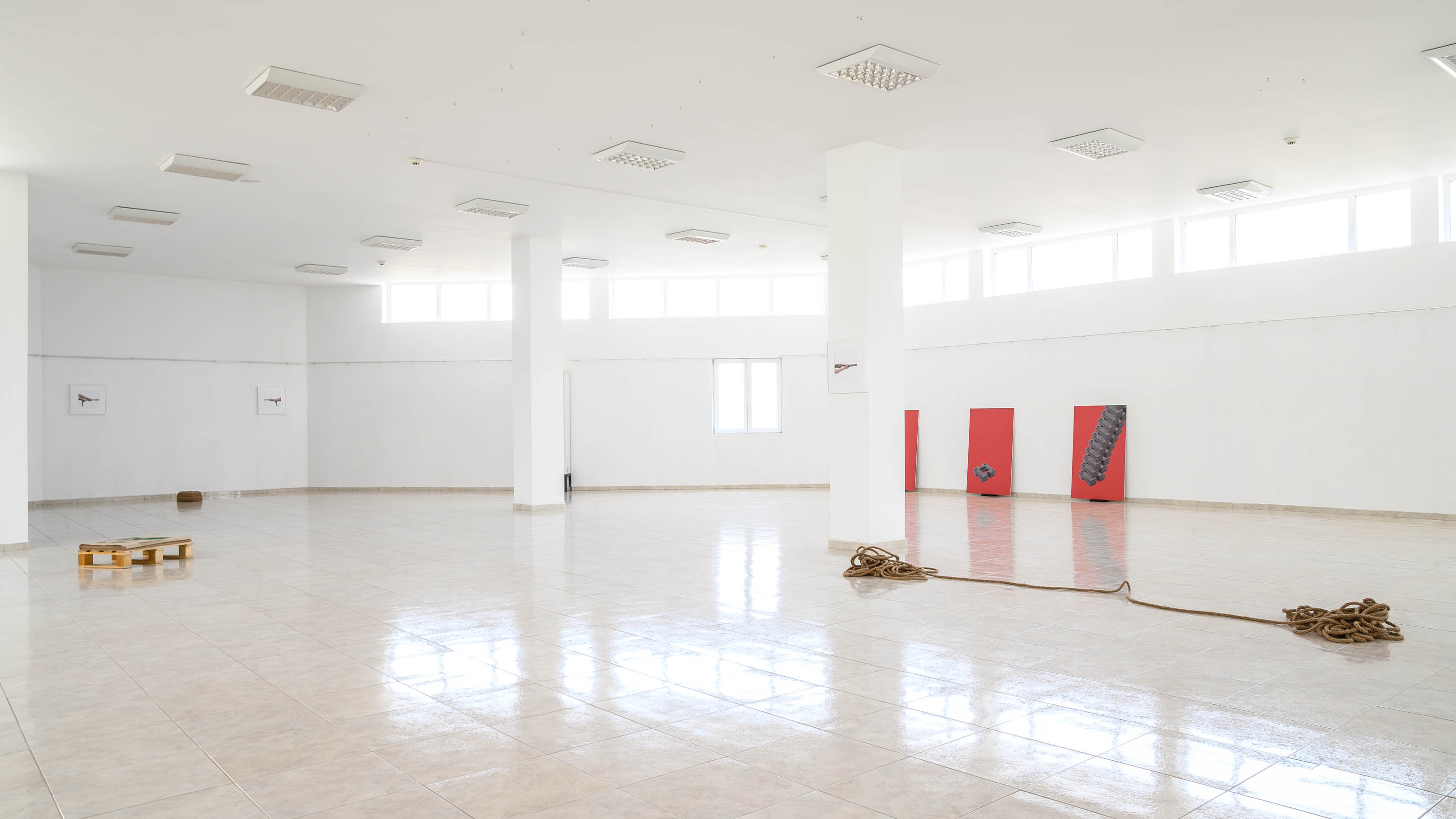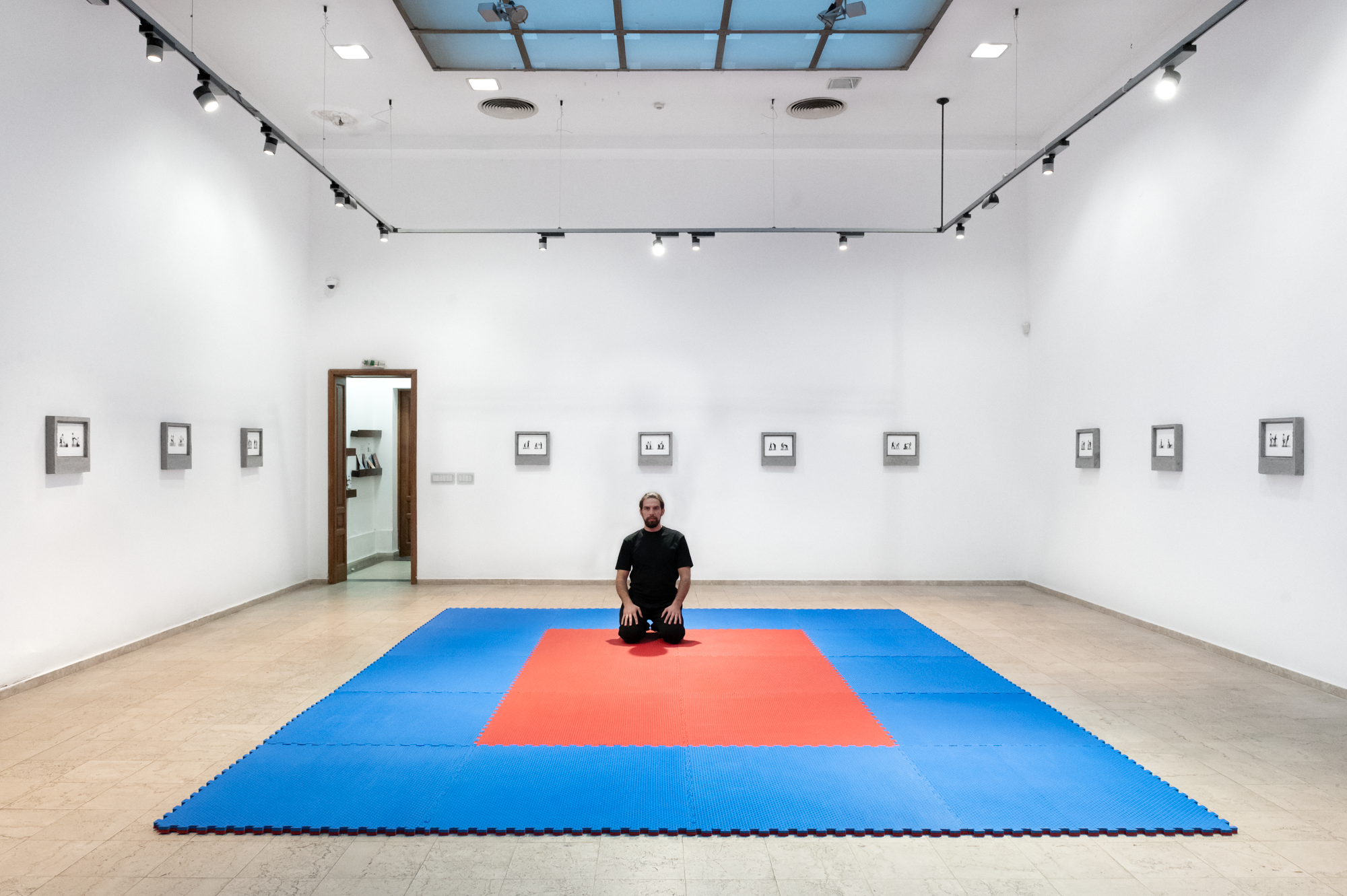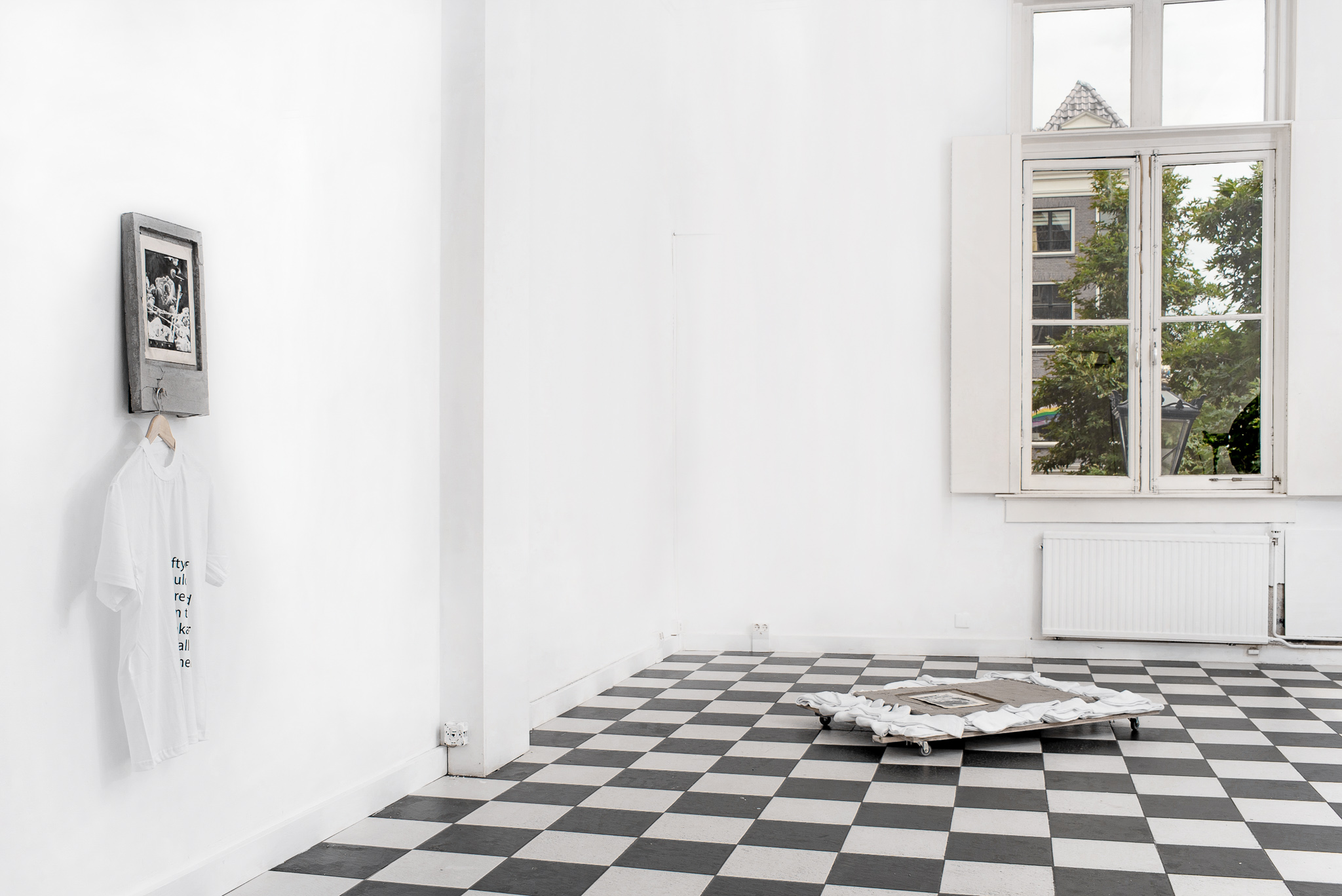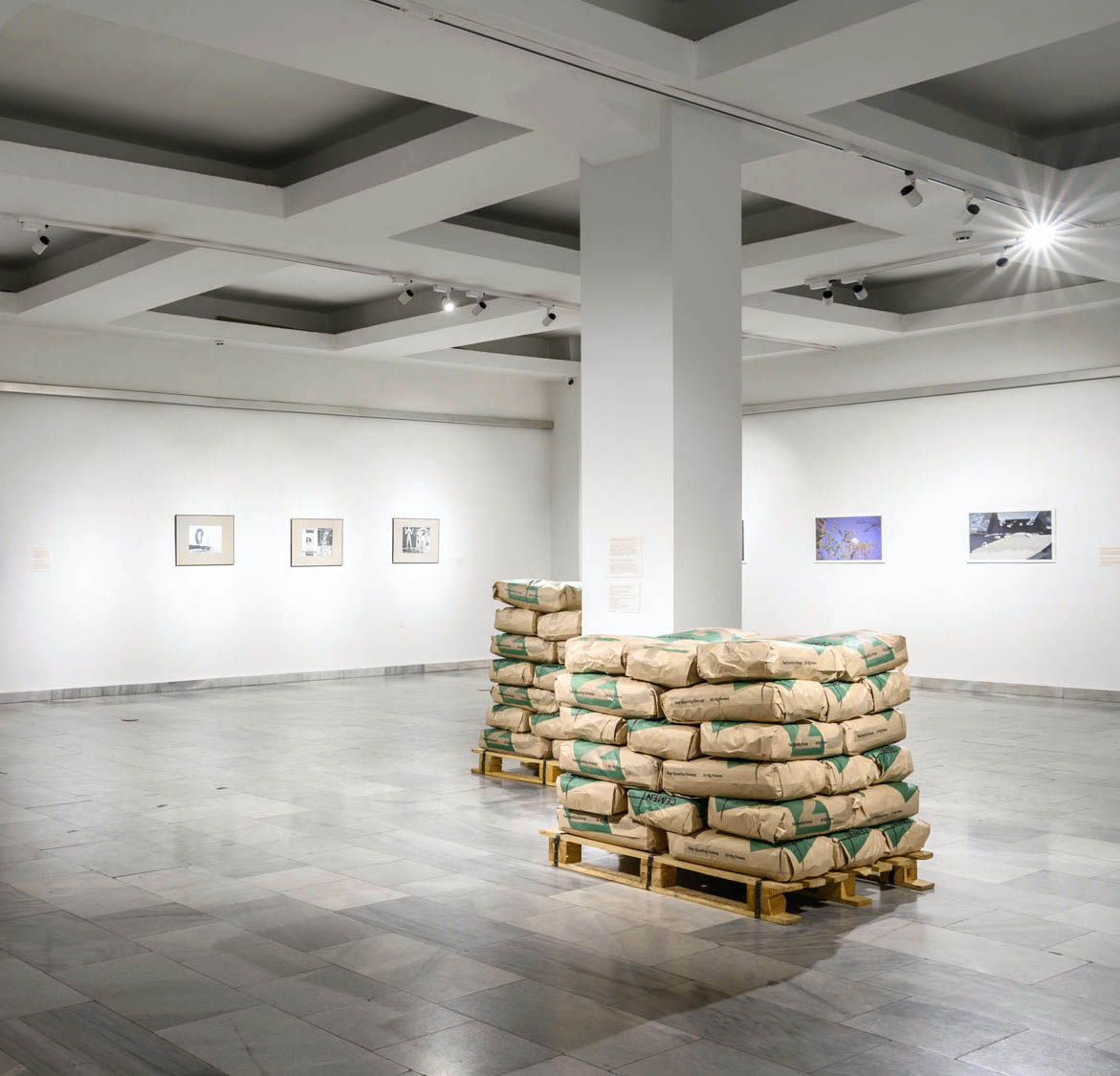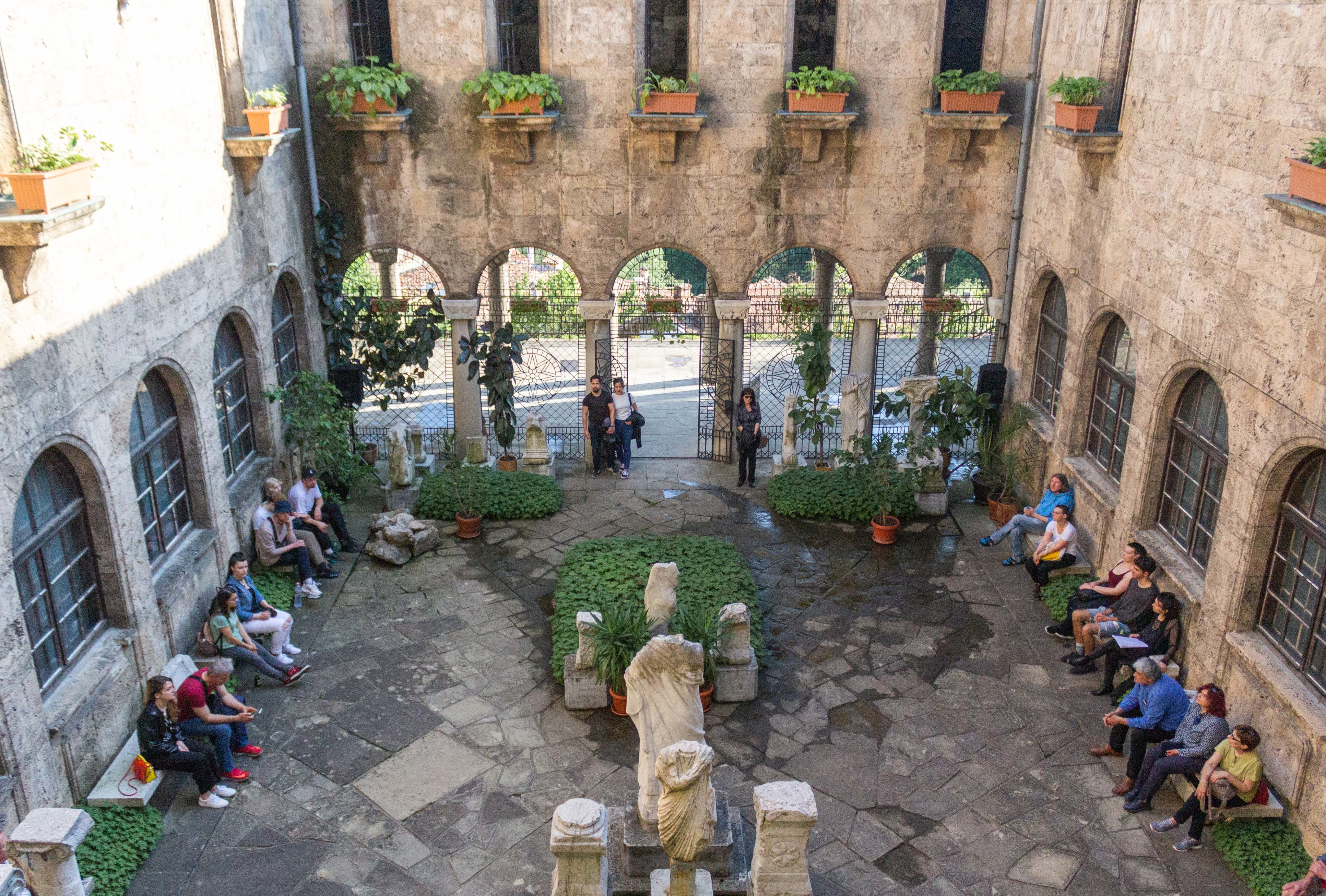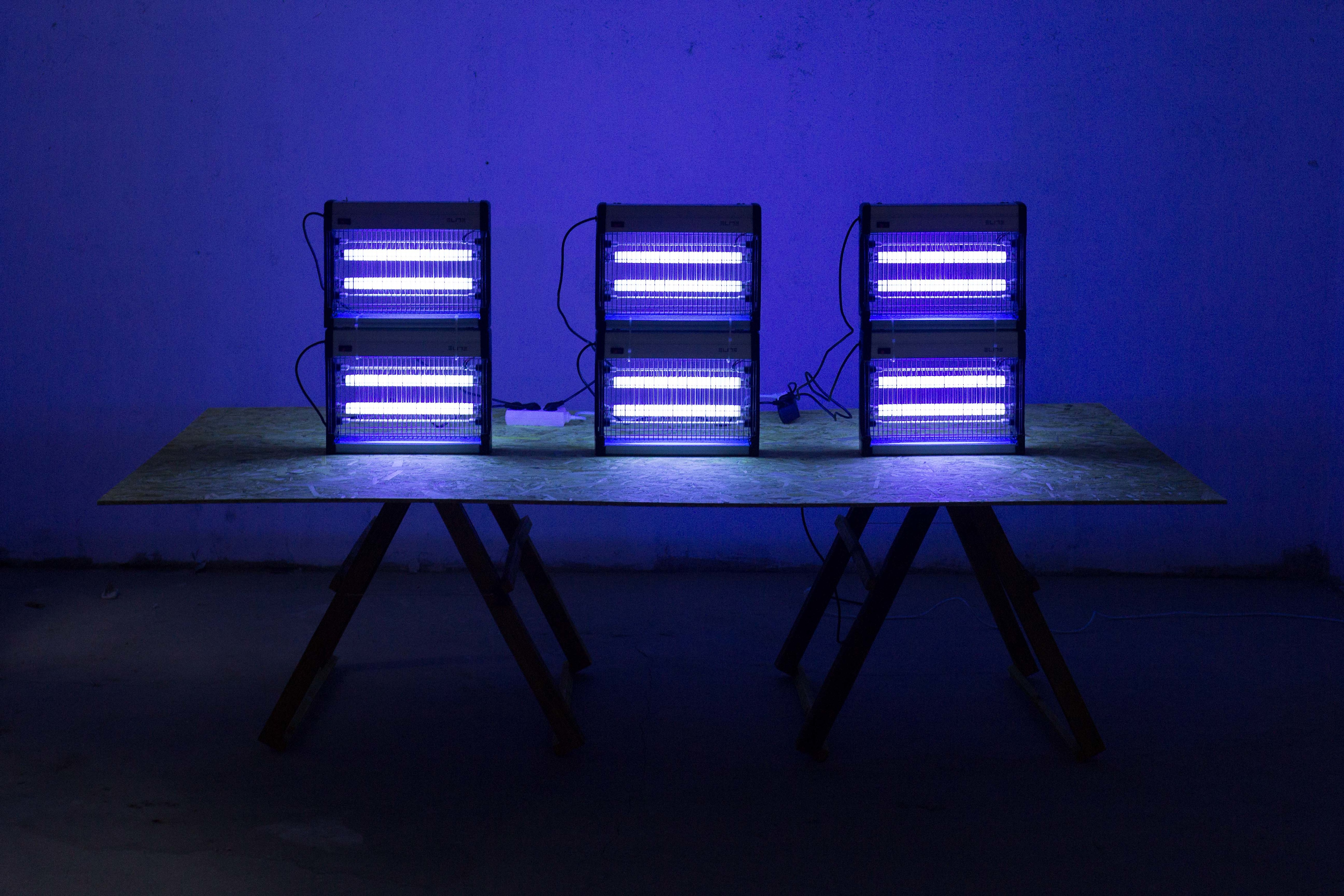“Somewhere between the velvet rope and the cracked foundation, Lars Nordby sets the stage. Not a real stage, mind you—not the kind with actors and cues—but something stranger. More personal. More exposed. A skeleton of staging. A ghost rig. An emotional blueprint with too many exits. The exhibition Stanchions Don’t Thresh feels less like a show and more like the moment right before one. The good moment. A theatre emptied of performance but charged with its residue. Rope systems. Trusses. Tilted lightboxes suspended in quiet choreography. You enter the room, and it’s as if the walls are waiting to inhale. Or maybe exhale. The audience is already here, but there’s no script—only thresholds. It’s hard to say if you’ve arrived too early or too late.”
“In his practice, Lars Nordby often draws inspiration from the condition of the theater, which he means is very similar to the gallery space, as their very existences rely on the relationship between the spectator and the spectatee, whether it be an object or a subject. This mutually dependent yet separate relationship is employed to delve into humanity’s deep-rooted obsession with identity and its desire for connection, acceptance, and belonging.“
“The exhibition 'Blue Seats' presents a series of works exploring the absence of conventional storytelling. A photo series mounted in pairs featuring empty audience halls in different theaters juxtaposed with silkscreen prints of their architectural floor plans. A theatre may house a show, but it also presents its own architectural reality. Choreographed exposition and exhibited choreography are the rendition of this kind of negotiation between visual art, exhibition spaces, and performing arts, which sets up the spectatorship dialectic between temporal and spatial dynamics. “
“What strikes me after experiencing this marvelous show is the shared narratives, inspirations, and visions that emerge when two cultures meet and greet again. Through the artworks on display, you will witness a fusion and a dialogue between tradition and innovation, a celebration of artistic diversity. This exhibition encapsulates the very essence of what it means to bridge the gap between mountains and the sky, where beauty knows no borders. Sooner than later. The bonds are now, once again, established.”
“The exhibition Places of Sorrow gives us the opportunity to experience contextually different lives that offer a constantly changing and astonishing perspective. Places of Sorrow offers a multitude of states related to the process of co-experiencing someone else's mood through side corridors, and labyrinth-like curvilinear paths”.
“Deceptively minimalistic, Restaging Parallax is, in a way, the first retrospective of the Norwegian artist Lars Nordby. The eponymous installation on view presents three performative works produced by the artist between 2016 and 2018. They are restaged at the ICA exhibition space through various elements such as fake walls, insecticidal UV lights and the medium of theatricality itself. Using the latter to explore complex mechanisms of ideological constructs, Nordby often transforms daily objects into theatrical props in order to create situations while activating in the viewer a certain “parallax gaze”– an ability to immerse ourselves in the mind’s’ blind spots. This ability can, in turn, serve as a powerful tool for the beholder to enact (political) resistance.”
“With the mise-en-scené titled Weight for Sanity, merge digital collages with self-drawn theatre blueprints including stage weights and mimic mechanical stage ropes that initially control theatre curtains - revealing what ìs to be performed.”
“The current social theme in the area of art is strongly expressed in his creative work. The inequalities, divisions, and greed often provoke the author's sensitivity, who recreates them through installations, performances, and photography. Lars Nordby examines the obsessive human search for identity and ideological affiliation. A severe concept of his creative inspirations is the theatrical one and its presence in everyday life. His approach toward the idea and the material for creating the artwork and the plot is strictly conceptual, containing many reference points.”
“The so-called performance turn in the visual arts adopts various (anti-)theatrical and dramaturgical strategies such as durational loops, flat structures, audience participation or endless lists of references and translations of one medium to the other – to allow the visitors to enter/exit the work whenever they wish and to avoid classical structures and settings. Lars Nordby somehow simultaneously continues and subverts these traditions with his latest exhibition at Credo Bonum.”
“The exhibition is based on found photomicrographs of geological matter. The photographs are mounted in frames made of concrete; a complimentary choice due to its mineralogical material. Some of the frames contain white garments with UV-printed black texts. The texts, written in different languages, are excerpts from a collection of poems by Lars Nordby, inspired by Albert Camus' notion of the absurd and theatricality. The collection of poems, titled When the Stage Sets Collapse, accompanies the exhibition project, expressing photography as a medium caught up with man's ambiguous and fragmented relationship to the natural world.”
“The artist Lars Nordby has recently visited a number of great theaters in Europe. With his camera he has spent the last couple of minutes before the curtain is pulled together with the actors. With these photographs, Nordby portrays the theatre as it looks from the backside. With his portraits of the human scenes acted out behind the stage, Nordby here highlights some of the dim solemnity lying right behind the spotlight. / In the exhibition space Nordby lets teleprompter-texts with good advice on how to obtain a persuasive behavior scroll before our eyes. He asks us questions about what the actors are really doing when they through layers of theatre makeup and rehearsed lines, brush their clothes, prepare their smile, and step onto the stage?”
This book is a photographic story of three Norwegian artists in Bulgaria. We follow the everyday life of my father, Knut Nordby, my uncle, Erik Nordby, and my uncle’s partner, Karima Risk, from 2003 to 2016. The story takes place in the Veliko Turnovo region, specifically in the rural village of Vishovgrad, where they established their home and atelier. Through their lenses, we get insight into a post-communist state frozen in time, yet in vast alternation with western development. The photographs capture vernacular archite- cture, interiors, spontaneous and carefully composed moments - everything dictated by local conditions.
“With these photographs Nordby portrays the theatre as it looks from the back side. Neither the accurate sentences learned by heart, the choreographed movements or the perfect lighting is in focus; the fragility behind the layers of the white makeup mixture of zinc, vermillion and grease is what has captured the attention of the artist. With his portraits of the human scenes acted out behind the stage, Nordby here highlights some of the dim solemnity lying right behind the spotlight.”
“For the 25th Gabrovo Biennale context, Nordby stages an art installation of cement bags - one of the most stubborn, harmful, and consumed materials of the 21st Century - parodying ways of framing material overconsumption. Two pallets of thirty-eight cement bags each are placed on the floor in the Gabrovo Museums exhibition space. Each bag has new artist-made packaging with original poetic text-work.”
The sound installation is presented in the garden at the Archeological Museum in Veliko Turnovo during the European Nights of Museums. The installation is part of Nordby’s continuous exploration of identity, theatricality and his notion of the irrelational.
“Old Laughter and Synonyms for Actors synthesises theoretical underpinnings of Nordby’s artistry to this point. Taking the notion of theatricality as his overarching theme, Nordby employs a range of strategies to investigate the intersection of identity with performance, within a visual language borrowed from the theatre.”
“The Abstract Frontline of Identity addresses the ephemeral essence of identity, which solicits its deconstruction. The character in focus is the fruit fly taken as ‘the very contemporary symbol of identity’ conveying the sense of self-realization, disappearance, loss, death, and absurdity. It is clear that in this sense the fruit fly's putative identity is not fixed but is instead taken over by the dynamics of all that it is not, by its other.”
“Nordby’s installation piece indicates an on-going potential action through the use of objects specifically designed to attract: UV-lamps for flies and glue traps for rats. The presentation of the objects evokes a sense that the missing subjects (flies and rats) are ready to enter the stage at any moment and enact their prescribed traits, as unwanted insects and rodents. In this sense the piece becomes an empty stage, continuously about to happen, to be performed on.”
“In Overidentification, Nordby repurposed OSB panels that had been used to board up shattered windows on buildings that were damaged after the terrorist bombing of the government district on the 22 July 2011, in Oslo. These panels were removed from their original site and function, and used to board up windows of the façade at Kunstnernes Hus.”
Actors where hired to stand behind an additional gallery wall made by Nordby. The actors where silent, invisible, and the only information given to the visitors was the title of the exhibition. The exhibition lasted for one hour.
The performance is developed in a collaboration between contemporary dancer Ida Haugen and Lars Nordby. The installation consists of a platform that is connected to contact-microphones. Contact-microphones are diverted to an output component that makes the movement the dancer is doing on the platform are delayed. The delayed sounds are then the conditions for the dancers next movements. Thus the dancer relates to the consequences of her own activity.
During the Fine Art European Forum / Poznań Conference Biennale, Nordby exhibited at the Old Butchery Complex, inviting fruit flies to fill the exhibition space.
Hallways in the City Hall in Chicago is filmed towards each of the four main entrances of the building. In the video, we see people walking in a grid-based architecture, reminiscent of the urban planning of cities in America with infinite structures.
Highway Furnitures is a photo series, containing 160 photos, taken along a Bulgarian highway. Each image shows a billboard stand mounted along the highway, without advertising looking out towards the Bulgarian countryside.
A sign with the title Work in Translation was placed on a pile of soil outside the Skoki Palace. During seven days the household workers at the palace spread the soil into different parts of the garden until the pile was gone.
Lars Nordby
www.larsnordby.com
post@larsnordby.com
